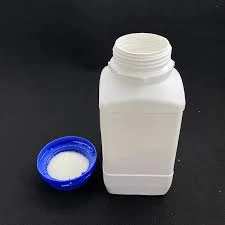Plastic Fillers and Additives Enhancing Performance and Sustainability
In the modern era of materials science, plastics have emerged as a cornerstone of industrial and consumer applications. Their versatility, durability, and adaptability have made them invaluable in various sectors, including packaging, automotive, construction, and healthcare. However, to optimize the properties of plastics and meet specific requirements, manufacturers often incorporate fillers and additives into their formulations. This article will explore the types, functions, and benefits of plastic fillers and additives, while also touching upon their role in sustainability.
Understanding Plastic Fillers
Plastic fillers are materials added to plastics to enhance their properties and reduce production costs. They can be broadly categorized into two groups non-reinforcing and reinforcing fillers. Non-reinforcing fillers, such as talc, calcium carbonate, and silica, are primarily used to improve processing characteristics and reduce the overall cost of the plastic. On the other hand, reinforcing fillers, such as glass fibers and carbon black, significantly enhance mechanical strength, stiffness, and thermal stability.
The incorporation of fillers can yield various advantages. For instance, calcium carbonate is widely used in polypropylene and polyethylene formulations to improve rigidity and impact resistance while reducing material costs. Similarly, glass fibers are added to thermosetting resins for applications that require enhanced tensile strength and dimensional stability, such as in automotive components.
Additives Small Changes, Big Impacts
Additives, unlike fillers, are substances added to plastics to modify their properties without affecting their basic composition significantly. These ingredients can serve multiple purposes, including improving the processing efficiency, enhancing performance, and providing additional functionalities. Common classes of additives include
1. Plasticizers These compounds, such as phthalates and adipates, are added to increase the flexibility and workability of plastics, particularly polyvinyl chloride (PVC).
2. Stabilizers These additives enhance the thermal and UV stability of plastics, preventing degradation during manufacturing and prolonged exposure to light. Examples include organotin compounds and hindered amine light stabilizers (HALS).
3. Flame Retardants Used to reduce the flammability of plastics, flame retardants like brominated compounds and phosphorus-based agents are critical in applications ranging from electrical appliances to building materials.
plastic fillers and additives

Benefits of Fillers and Additives
The strategic use of fillers and additives in plastic formulations offers several advantages
- Cost-effectiveness By replacing a portion of the polymer with fillers, manufacturers can significantly reduce material costs while maintaining acceptable performance levels.
- Enhanced properties Fillers and additives can improve various properties of plastics, including mechanical strength, weather resistance, and processing characteristics.
- Expanded functionality The incorporation of specific additives allows plastics to perform specialized roles, such as self-extinguishing in fire safety applications or anti-static properties in electronic cases.
Sustainability Considerations
As the world pivots towards more sustainable practices, the role of fillers and additives in plastics plays a crucial part in this transition. Many manufacturers are exploring bio-based fillers, such as cellulose, starch, and natural fibers, which can reduce reliance on fossil fuel-derived compounds and lower the overall environmental footprint of plastic products.
Additionally, advancements in recycling technologies and the use of recycled fillers are becoming increasingly common, promoting a circular economy within the plastics industry. By reducing waste and conserving resources, these practices not only enhance the sustainability of plastic products but also align with global efforts to combat climate change.
Conclusion
Plastic fillers and additives are essential components in the formulation of modern plastics, enabling manufacturers to enhance performance, reduce costs, and meet evolving consumer demands. As the industry continues to innovate, the integration of sustainable practices in the use of fillers and additives will be crucial in ensuring that plastics remain a viable and responsible choice for the future. Through the thoughtful application of these materials, we can continue to unlock new possibilities in the world of plastics while addressing the pressing challenges of sustainability.

